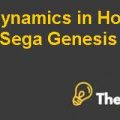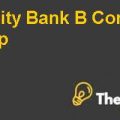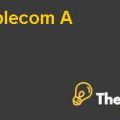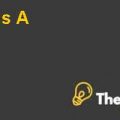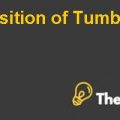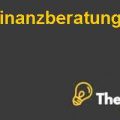The main character is concerned about the inventory levels of retail trade. Explores the relationship between the retail inventory and future revenues -., And, consequently, the relationship between the level of reserves and the stock price "
Inventory in retail sector:
The ratio of inventory turnover is the proportion of cost of goods sold to average inventory level. This ratio is used to measure the performance of inventory. For example best buy store, electronics retailer had ratio ranged from 2.85 to 8.53 during 1987 to 2000. Inventory turnover could be correlated with other measures such as the performance of retail stores can be accessed through the correlation of the inventory turnover and gross margins.
Return on equity is also a measure which is used to find out the relationship between capital intensity and inventory turns. Return on equity among retailers to be equivalent to higher gross margins would need to experience a change in inventory turnover.
Corporate Performance:
Corporate performance can be measured by identifying the link among inventory turnover, capital intensity and gross margins. Some measures do not vary systematically from one retail segment to another such as return on assets, sales growth, financial leverage or return on equity. Retailers with demands of grocery and convenience goods have better efficiency ratio rather than retailers of shoes, electronics and toys etc. There is an inverse relationship between gross margin and inventory turnover. A retailer who keeps units for longer periods expects to earn more on it than a retailer who keeps units for comparatively shorter period. If retailers belong to the same segment, they expect to achieve equivalent inventory productivity which is GMROI gross margin return on inventory investment.
When there is an investment in information technology, inventory and logistics management which involves capital investment then this is accounted as fixed assets. If there are two firms with the same business, have the same gross profit margin and same inventory turnover but different capital intensities then the company which has lower capital intensity has better inventory management systems.
John B, River
John B, River Clothiers, Inc. is a leading U.S. retailer of men’s tailored and casual clothing. The set-up includes physical store along with its catalogs and internet. Third party contracts are made for its specifications and designs. Their product line includes high-quality accessories for male from head to toe. Its popular brands are pants, vests, shirts, sportswear, etc. All products are marketed under John B. River except branded shoes. Its trend is the most important determinant of sales at its stores.
Earlier, in 21st Century people are more formal regarding their dresses at workplaces. On retail stores 80% of store space is reserved from which 20% is reserved for stocks and tailoring activities. As the business gives high value to its customers therefore, it has retail stores in different demographics and seven outlets that provide excess merchandise. In the year 2003, 11% of net sales and in 2002, 12% of net sales are were executed through internet and catalogs. The competitors of John B. River were Men’s Wear house Inc. and Brooks Brothers. Their planning is very supreme regarding information systems while conveying all relevant information to third parties or vendors. Around 24% of their supplies were purchased from U.S. suppliers and 15% from Mexico in 2003. There is a centralized distribution centre which receives the inventory and distributes it to warehouses or stores directly. Inventory is tracked by point of sales system and in the year 2004, $3 to $4 million was spent by the company to increase its capacity to serve 500 stores. The store had developed its five way strategy to achieve growth. First strategy is to increase the quality of products by focusing on designs and manufacturing. Second strategy is to expand its internet sales and catalog operations, third is to produce new products, fourth is to remove middle-men from distribution channel and fifth is to increase the high- level of service standards through high inventory levels.
To achieve its growth targets, the company planned to expand the business to 500 stores. In the year 2004 approx. 60 stores were opened and 75 to 100 were decided to opened during 2005 to 2008. The cost associated for the opening of stores is about $225,000 for fixtures, point of sale equipments and $350,000 for inventory levels for peak seasons. John B. River depends upon classic designs because customers demand classic styles.
John B. Rivers- Inventory valuation:
First time, the business used this method to value its inventory. It is noticed that if prices are increased, FIFO valuation generates higher net income than LIFO. John B. River’s inventory had been grown over past four years. Especially its inventory had higher growth rate than sales. The statistics include growth in sales by 23%and inventory by 54% in 2003. In 2004 sales grew by 24% while inventory by 4%. Day’s payables declined from 33% in 1998 to 27% in 2004..........
This is just a sample partial case solution. Please place the order on the website to order your own originally done case solution.
by Ananth KR, Vishal Gaur, Saravanan Kesavan Source: Harvard Business School 19 pages. Publication date: April 12, 2005. Prod. #: 605081-PDF-ENG

